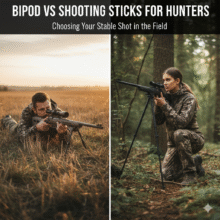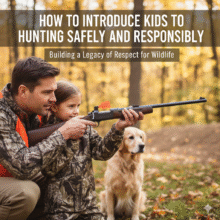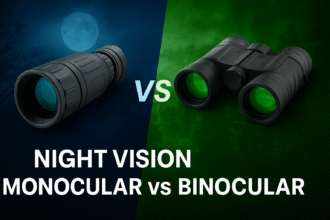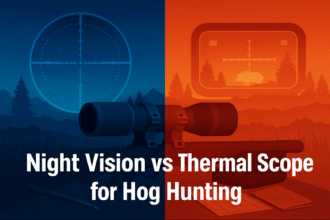🛰️ Drone Use for Scouting Hunting Grounds (Legal Issues)
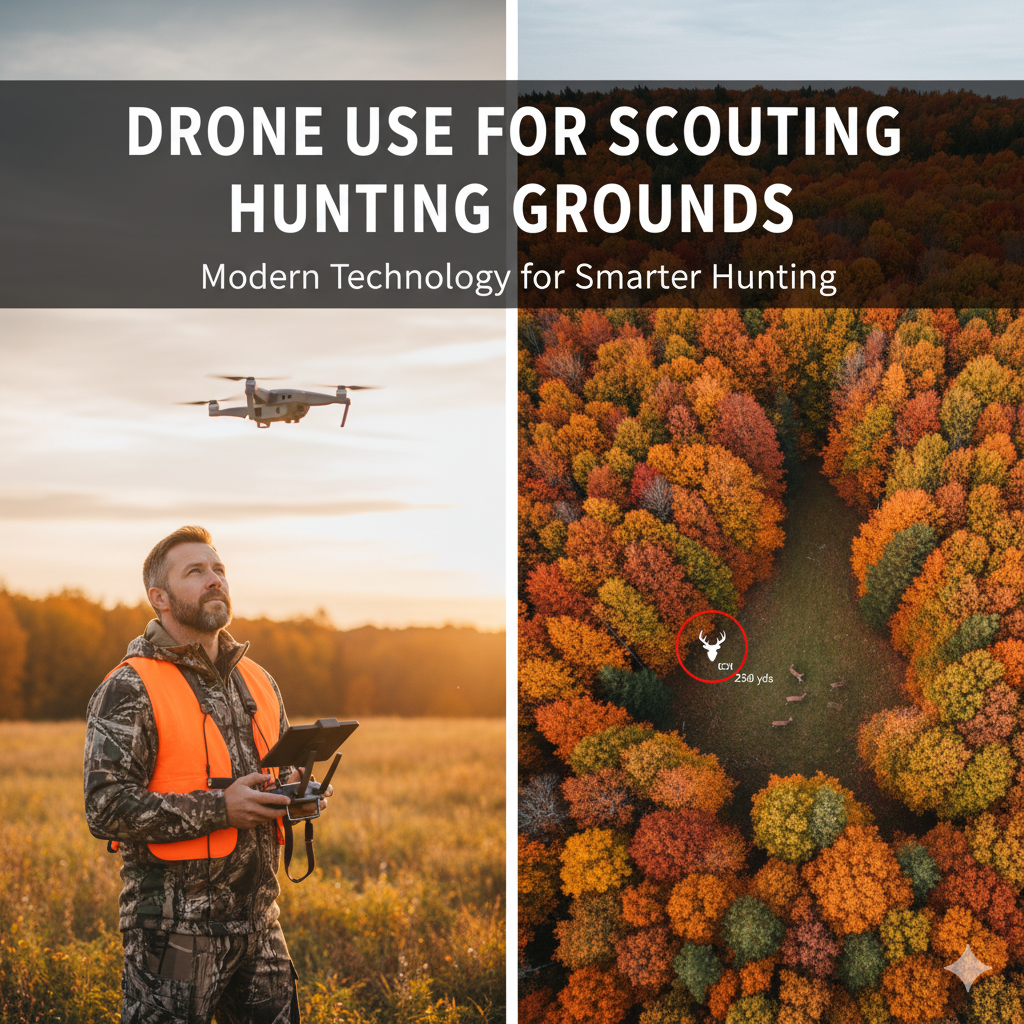
In today’s age of high-tech hunting, drones have transformed the way hunters scout terrain, locate game trails, and evaluate hunting zones. From aerial mapping to monitoring animal movement, drones offer a distinct advantage in planning a successful hunt.
However, before taking flight over your favorite hunting area, it’s crucial to understand the complex web of legal restrictions, ethical considerations, and hunting regulations surrounding drone use. Misusing a drone could lead to heavy fines, revoked hunting licenses, or even criminal charges.
This article dives deep into how hunters are using drones to scout hunting grounds and the legal issues every outdoorsman should be aware of.
Table of Contents
1. The Rise of Drones in Hunting Scouting
Drones (or Unmanned Aerial Vehicles, UAVs) have become valuable tools for hunters and wildlife managers. Equipped with 4K cameras, GPS, and thermal imaging, modern drones can:
- Capture aerial views of hunting grounds to analyze terrain and vegetation density.
- Help identify animal trails, feeding areas, or bedding zones without physically disturbing the area.
- Record data over multiple seasons to observe migration or population patterns.
- Improve safety and navigation in remote locations.
For pre-season scouting, this technology can save countless hours of on-foot exploration. But while drones bring efficiency, regulators view them carefully due to potential misuse during actual hunts.
2. The Legal Framework: Federal and State Drone Regulations
🛑 Federal Laws
At the national level, drone usage is primarily regulated by the Federal Aviation Administration (FAA). Under FAA Part 107, recreational and commercial drone pilots must:
- Fly below 400 feet above ground level.
- Maintain visual line of sight at all times.
- Avoid restricted airspace (such as national parks or military zones).
- Register drones over 250 grams with the FAA.
- Never operate drones in a way that endangers wildlife or other people.
Violating FAA regulations can lead to fines up to $27,500 (civil) or $250,000 (criminal) and imprisonment.
State and Local Hunting Laws
Where things get more complicated is at the state level. Every U.S. state (and Canadian province) has its own hunting-related drone laws.
In most regions, using drones to locate, track, or harass wildlife during an active hunting season is illegal. For example:
- Colorado prohibits using drones to locate or drive game animals.
- Alaska bans spotting game with drones on the same day of the hunt.
- Montana and Idaho restrict the use of any aircraft for game-scouting within 48 hours of hunting.
- Ontario (Canada) prohibits using drones to disturb or locate animals for hunting purposes.
In short: while drone scouting is legal for land survey and terrain mapping, using a drone to gain a real-time advantage during hunting season is usually a violation of fair chase principles.
3. “Fair Chase” and Ethical Hunting
The concept of Fair Chase, established by the Boone and Crockett Club, emphasizes equal opportunity between the hunter and the hunted.
Using drones to spot or track animals violates this principle because it:
- Removes the natural challenge of locating game.
- Increases success rates unfairly.
- Disturbs wildlife behavior.
Even where not explicitly illegal, many hunting associations condemn drone use during active seasons. Ethical hunters often use drones only for off-season land scouting, property boundary checks, or habitat restoration surveys.
4. Acceptable Uses of Drones for Hunters
Despite restrictions, there are legally acceptable and highly beneficial applications for drones in the hunting ecosystem:
✅ Off-Season Scouting
Use drones to map trails, identify water sources, or measure field coverage before the season starts.
This gives hunters valuable insights while staying compliant with local laws.
✅ Land & Property Management
Landowners can use drones to:
- Inspect fences, tree stands, and blinds.
- Monitor erosion, flooding, or forest health.
- Evaluate food plots and planting zones.
✅ Wildlife Conservation
Drones help biologists and conservation agencies track herds, identify disease spread, or monitor habitats — a practice often permitted with special authorization.
✅ Safety & Search Missions
Some jurisdictions allow drones for search and rescue or game recovery (after a legal harvest), provided they’re not used to pursue live animals.
5. Common Legal Pitfalls to Avoid
Before flying, ensure you’re not crossing any legal lines. Here are common mistakes that lead to penalties:
| Mistake | Legal Consequence |
|---|---|
| Flying drones over wildlife refuges or national parks | Federal violation (hefty fines) |
| Using drones to flush, locate, or chase animals | Illegal in most states |
| Filming other hunters or private property without permission | Privacy law violations |
| Failing to register drone or obtain FAA certification | Civil fines up to $27,500 |
| Flying during restricted hours or zones | Confiscation or license suspension |
Always consult your local wildlife agency or state hunting department before operating drones in the field.
6. How to Stay Compliant
Follow these best practices to stay within legal and ethical bounds:
- Check state regulations before each scouting trip.
- Fly only in off-season or non-hunting days.
- Avoid flying directly over wildlife or nesting areas.
- Obtain landowner permission when flying over private land.
- Label and register your drone per FAA or Transport Canada requirements.
- Keep video footage for personal land management use only, not for real-time game spotting.
- Join conservation organizations to stay updated on changing drone policies.
7. The Future of Drones in Hunting and Conservation
The future of drones in hunting looks promising yet tightly regulated. As technology advances, drones are being used not only for scouting but also for wildlife population surveys, reforestation, and fire management.
Some states are considering permit-based drone programs for ethical scouting or conservation monitoring. Others may introduce geo-fencing systems that automatically restrict flight zones near active hunting areas.
Ultimately, the responsible use of drones can make hunters more informed stewards of the land as long as the line between technology and fair chase remains respected.
Conclusion
Drones are powerful tools that can revolutionize pre-season scouting, land management, and conservation efforts. But their misuse can just as easily lead to legal trouble and ethical controversy.
For every hunter, understanding and respecting both FAA flight laws and state wildlife regulations is essential before taking off.
By flying responsibly, you ensure that drone technology enhances your hunting experience without compromising ethics, legality, or wildlife well-being.


